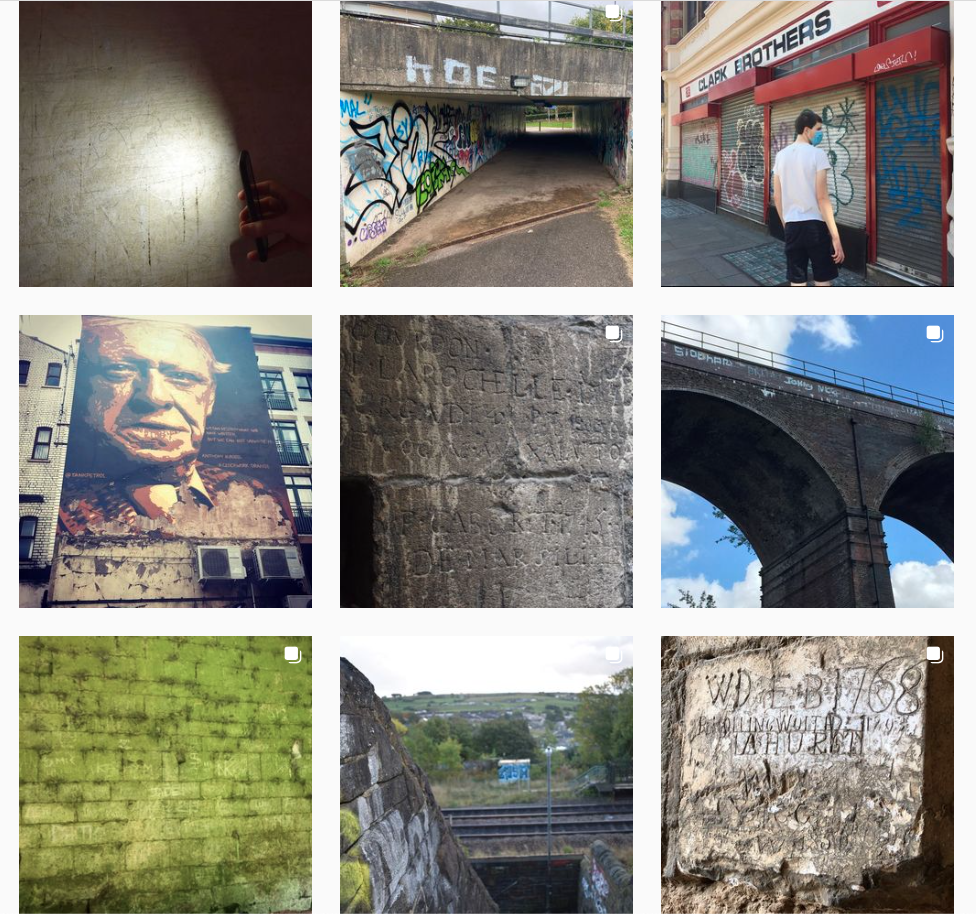Stage 5 // Los Arcos – Logroño [27,6 Km]

After a cozy quiet night in Los Arcos we have renewed energy to carry on. Ahead, almost 30 km of easy trail with nice views that will lead us to the land of wine (or one of them… only in Spain there are several). To be honest, there is nothing really remarkable on the way, so it is better to find a good pace and get to Logroño soon. From Viana (the last village before Logroño, cute) you can pay attention to birds. It is not a bad area for birdwatching.
Logroño is an interesting town (Gate of San Bartolomé church in the image) with plenty of places to get lost in wine… very good wine. So take care and try to rest. But this does not mean you cannot drink one or two to relax… Also walk a bit and see some interesting industrial heritage like the iron bridge and some wineries 😉
20:00 GMT // Graffiti Tourism: from Mark Makers to Mark Seekers
Emma Bryning
You can follow Mark Makers and Mark Seekers account in Instagram, or visit her web site From Mark Makers to Mark Seekers. The live presentation will take place on Zoom at 20:00 GMT.
As an act of mark-making, graffiti can be understood as a form of visual communication; as an example of self-expression or as an art form; as part of both a subcultural practice and a global movement; as an historic record; and as a way to understand local environments as they can contribute to a sense of ‘place’. Alongside all of this, graffiti can also be viewed as physical evidence of movement and a type of materiality left behind which can help shape the landscapes and environments around us.
Graffiti as a form of ‘materiality of movement’ can be evidenced in both historic and contemporary marks: this includes the recurring connection between freights, trains, subways and graffiti; marks created at pilgrimage sites as a ‘mark of prayer and thanksgiving’ (Easton 2015); the aesthetics and physical form of modern graffiti which often includes suggested movement in their design; how images of graffiti are increasingly shared across the globe – providing graffitists which new international audiences – and the interesting connection between tourism and this mark-making practice. Matthew Champion has written that graffiti can become more prominent at times when populations become more mobile (2017, p7). This idea can be seen in graffiti connected to the Grand Tour when individuals would sometimes leave marks as part of their tourist experience, as part of a cultural pilgrimage, and how leaving graffiti at heritage sites became an increasingly common practice in Britain in the 19th-century due to factors including increased leisure time and the advent of the railways. This practice of leaving a mark to state ‘I was here’ continues to be a common practice to this day, as many individuals leave something behind of themselves as they visit new spaces, as tourist marks, or as a way of forging a connection with the environments around them as they move between spaces, such as with tagging. Whilst historic and contemporary tourist graffiti can be understood as evidence of the materiality of movement, graffiti and street art can increasingly attract tourists themselves with individuals travelling to see particular pieces or graffiti hot-spots. Consequently, graffiti can both serve as evidence of travel and tourism, the mark-makers, and also as part of the reason for such movement, the mark-seekers.
Alongside the presentation, there will also be a digital exhibition displaying a variety of photographs which demonstrate the relationship between graffiti, tourism and movement, featuring marks made in a variety of different contexts and from a range of historic periods. These images will come from a collection of photographs taken during the course of my research project so far, which seeks to explore whether understanding graffiti creation today can help us to better understand their role in the past. Each photograph will be accompanied by a description as well as location information in case viewers are able to and want to seek-out the graffiti in-person for themselves. The digital exhibition will include photographs displayed on an Instagram page and a 3D virtual gallery, the latter being temporary for the duration of the conference and, thus, reflecting the often ephemeral nature of graffiti itself.

Join the conversation with Emma at 20:00 GMT
ZOOM access:
ID: 822 2832 6666
Passcode: 184682